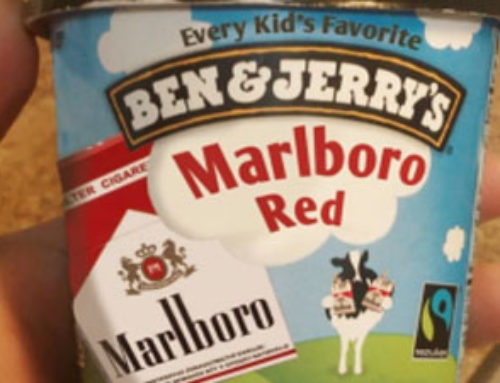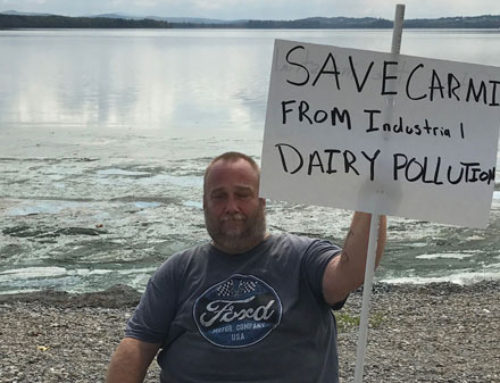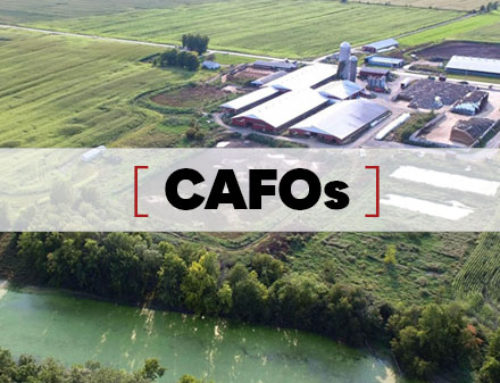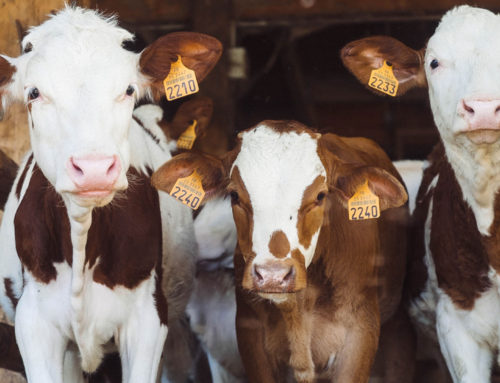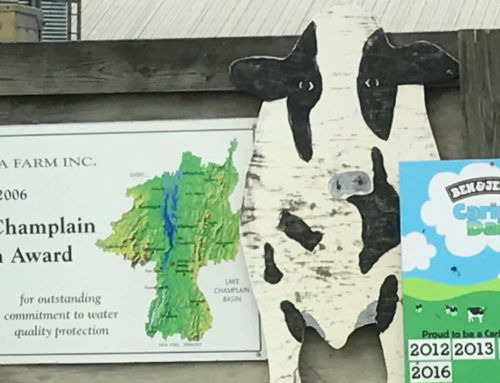[The following essay was the original strategic document that launched Regeneration Vermont more than four years ago. It was written by our co-founder, Michael Colby, to our founding partners and board. It remains the touchstone for our activist philosophy and blueprint for our campaigns aimed at a transition to a new, regenerative agriculture in Vermont.]
Today’s environmental movements fill me with despair. It seems to be their only goal. They’ve perfected the art of horrifying me with this tale and that about how awful it all is – The food! The water! The animals! The planet! The people! It’s all dying, all of it, even me, they tell me to no end, louder and louder, and in newer and newer formats. And yet they want me to be alive, or at least alive enough to take it all in and – what? – send them a check to keep all the horror stories coming.
It’s an impossible game they’re playing. Scaring us into a state of absolute shock. And around and around it goes, the players and the issues always changing but the lack of meaningful action remaining the same.
Regeneration to me is about more than the specific issues we’re facing (pick one). It’s first and foremost about changing the way we approach the issues themselves. The regeneration of activism itself is what’s needed. It barely matters which issue we pick.
Not to belittle the Post Traumatic Stress Disorder (PTSD) that so many of our troops are coming home with, but it’s similar to what many citizen activists are experiencing with so many campaigns. Like the troops, they’ve been put into an untenable situation, awash in the hell of combat for – seemingly – combat’s sake alone. They see no way out, no progress, no hope – only fear, destruction, and hopelessness. There is no “exit strategy.”
It’s only natural, therefore, for someone who is put in a “no exit” situation to look for their own way out. Get me out of here and away for this is the rational response, from the troop member in some faraway place to the citizen activists who clicks away at the endless stream of horrors that today’s electronic media puts in front of them by the minute.
You can’t bury hope in a mountain of doom and expect to notice its lure. But that’s exactly what today’s movements are doing: trumpeting one endless stream of doom, one untenable situation after another, not least of which is the contemplation of the Earth itself dying. No small malady, for sure. Deer, meet headlights.
And when hope is finally offered, it’s a miserable crumb at best, never enough to satiate a true hunger for justice. And so the movement starves itself from the beginning, from the inside mostly, because the doom never manages to ripple too far beyond its insular leaders.
Scaring people without a plan is one of the highest (lowest?) forms of activist malpractice. It’s right up there with scaring people and offering a trivial plan. Our solutions have to be as radical and as thorough and as clear as our exhortations of the problems. Otherwise, we’re just wasting everyone’s time.
Take the climate movement. The Earth is dying, they say. And they’re right. But then I ask them what to do. And they tell me to get my college to divest its oil stocks and some other rather long-term and long-shot kinds of “solutions.” Great, so the Earth is dying and I’m going to work to clean up my college’s stock portfolio. Hope, meet despair, because it will be taking over here.
To offer a belittling solution is to belittle the problem. And they ought to be ashamed.
We must do everything we can to keep Regeneration Vermont out of these activist traps. That’s been my mantra as I’ve been reading about the current activist landscape and thinking strategically about our project. I’ve been getting into warrior mode, as Wally called it, and here’s how I’m seeing our Vermont model unfolding.
Setting the stage and tone is critical – preparing the activist soil, if you will. We must avoid the typical Vermont eye-roll (oh, it’s them) and small-town-like pigeon holing of each and every effort (oh, it’s them again). We need an air of newness and mystery about it all, avoiding the same old, same old endorsements and players and sponsors. I don’t think Ben & Jerry will be offering any free cones for our rallies anyway…
I’m approaching strategy development by dividing it into two different phases, each unveiled at different times but, in fairly short order, depending on the responses from our target(s), they will eventually run concurrently: Developing a Presence/Introducing the Campaign Thesis, and Direct Action.
Developing a Presence/Introducing Campaign Thesis
First and foremost, the concept and name of Regeneration Vermont needs to be introduced to the Vermont public. The introduction must be centered around setting the tone and building the base. Through a series of op/eds, interviews, press conferences/news releases, Regeneration Vermont will be born. Each effort will offer a directional to the website for people to sign-up for all future information and action alerts. We must build a solid base of activists.
I’m afraid to say that all my activist lists are old. I’m not sure what you have access to, but we’ve got to have a sizable army before we go to war. Thus, I’m approaching this with a ground-up mentality, starting from scratch.
These introductions will evoke a powerful tale of agriculture’s role in Vermont, then and now, and its overdue need in regenerating itself – from the soil up. They will introduce the principles of regeneration agriculture and put a spotlight on the ways in which Vermont has gone awry. The endless silver bullets promised by the corporate agri-barons — pesticides, fertilizers, GMOs – have meant silver for them and bullets for farmers and consumers. One shot after another, decimating not only farms, but ways of living and being, and the rural culture that sustained and flourished in it.
Vermont bought the lies of industrial agriculture, hook, line and sinker. It’s time to admit it and move on. It’s done enough damage. GMOs should be their last hurrah. Their last great lie. Because we’ve seen enough.
We point to the loss of farms and the death of our small towns and villages. We point to the status of our soil and water. We point to the toxins that continue to be used. We point to GMOs and the spiral of agricultural death they have us in. We point to the migrant workers and their squalid living and working conditions. We point to the animals standing forever on nothing but concrete. And we point to industrial agriculture’s significant role in climate change.
All with the solution – regenerative agriculture – ready at the helm. We know how to switch. And we know who needs to switch: (insert dairy corporation name). Yes, Bernie, let’s talk about a revolution. And why not start it right here in Vermont. Better yet, center it around agriculture. Regeneration now.
This is where Vermont can lead best, and authentically: With our agriculture and our commitment to place. It’s how we’ve been marketing ourselves for decades. But the sad tale of industrial dairy farming in Vermont needs to end, with GMOs being its last stand, the great line of demarcation between the damage we are doing and the great tomorrow we are creating, all with an agricultural focus, from industrial to regenerative. Now.
The communication hub will be centered around the website RegenerationVermont.org. It will be simple, elegant and to the point. Our statement of purpose, the principles of regeneration, our campaign thesis and a way for people to sign up will be its primary focus at the beginning. Later, and probably much sooner than later, we will add the activist components as the targets/tactics become clear. At the start, however, I want it to cast a wide net, giving us a chance to draw in as many people to the very palatable message that Vermont agriculture needs to lead the state out of its economic, ecological and climate malaise. While it is a big part of the problems, it is also essential for the cure.
I have been trying out a lot of different approaches to introducing the campaign thesis, trying to find the right synthesis and language.
What follows is a sample overview, executive summary, if you will:
Regeneration Vermont: Renewing Agriculture
Regeneration Vermont is a nonprofit advocacy organization that is working to halt the catastrophic consequences of Vermont’s adoption of industrial agricultural techniques, particularly within the dominant dairy sector, and to rebuild Vermont agriculture in a manner that provides economic justice to farmers and farm workers, protects and enhances the natural environment, produces healthy food products, promotes animal welfare and implements climate change remediation through an understanding of and commitment to living soils, healthy animals and safe food.
The history of Vermont – its people, its land and its culture – has been inextricably tied to agriculture, in good times and in bad. Unfortunately, the last 60 years or so have been marked by the worst of times, a period in which over 10,000 dairy farms have been lost, our soils and waterways have been chronically contaminated, and our economy and culture ravaged by the enormity and pace of the change.
Vermont has been a state of denial in regards to its relationship with agriculture, a pure and true enabler. While Vermont has stood long and proud with industrial dairy, defending it and promoting it to no end, the damages from its toxic, concentrated, and environmentally-threatening techniques have been largely ignored. Until now, the cheerleading has effectively distracted the state from soberly and effectively addressing the unseemly damage being caused by Vermont’s industrial dairy.
But facts are facts:
- Thousands of farmers have been chased off the land, leaving our once-thriving rural communities reeling from the dramatic decline of jobs, opportunities and dignity;
- The increased concentration of dairy herds, where many are merely “concrete grazers,’ rarely – if ever – stepping on grasslands, have led to severe water quality and animal welfare issues;
- Reliance on industrial, commodity-based production agricultural techniques has meant
a steady increase in the use of toxic pesticides, herbicides and fungicides, as well as
synthetic nitrogen fertilizers, resulting in denuded soils, contaminated – even dead —
waterways, and food products that may contain carcinogenic and otherwise health threatening additives; - Despite Vermont’s willingness to lead the nation with its efforts in mandating the labeling of genetically-modified organisms (GMOs), Vermont’s own agricultural practices remain committed to GMO crops. Currently, GMO-based feed corn is the state’s number one crop, planted on over 90,000 acres of Vermont’s farmland, representing more than 90% of all the feed corn grown here. Vermont’s GMO labeling law, while clearly a show of great concern about the dubious technology, exempted Vermont’s dairy and meat products from the labeling requirement.
- Vermont’s industrial dairies are literally killing our waterways and watersheds, including our beloved Lake Champlain. Despite hundreds of millions of dollars spent over the last few decades on trying to clean up the mess that is largely the result of large, confinement dairies (conservatively estimated at 40% of the problem statewide), 13 lakes and 68 streams in the state have been deemed “impaired” by the U.S. EPA.
- Conservatively, agricultural practices amount to 10.5% of Vermont’s total greenhouse gas emissions every year, that’s about the exact same as is attributable to our statewide electrical consumption. If Vermont is, indeed, serious about climate change remediation, industrial dairying, with its addiction to carbon-intensive nitrogen fertilizers and confinement of animals that leads to feed and manure-based contributions to greenhouse gas emissions must be addressed.
- The unfair concentration of wealth within Vermont agriculture, monopolized by a handful of large dairy-based corporations, is the result of a commodity-based pricing system that economically exploits both the farmers themselves and the increasing number of migrant workers who are filling Vermont’s farm jobs. Currently, because of the obscenely low price being paid for commodity milk, Vermont’s non-organic farmers are spending more to produce the milk than they’re getting to sell it. It’s a downward economic spiral that not only drives continued rural poverty, but also leads to farmers trying to cut costs in other areas like environmental remediation, animal welfare, and farm maintenance.
- Vermont dairy’s increased reliance on migrant farm workers, mostly from Mexico, is giving rise to a host of social and economic justice issues. Recent work to bring these issues to light have uncovered unconscionable living conditions and abuse, not to mention low pay and long hours, all without the ability to move around freely in the community due to their illegal status.
It is, indeed, a sad tale. And, for too long, we’ve deluded ourselves into thinking it’s all a fairytale, where farmers can do no wrong and deserve no blame. Those days – and delusions – must end. If, that is, Vermont is going to be serious about being a leader in agriculture, social and economic justice, and climate remediation.
While Vermont’s industrial-fixation on dairy production has brought us a host of problems, literally bringing our economy and natural resources to the brink, the good news is that a new era of Vermont agriculture – one based on the principles of regeneration — can not only eliminate these problems but also provide a path toward climate remediation. It’s where Vermont can truly lead, by showing how to live in tomorrow’s world.
Regeneration now. And here’s what it looks like:
The great poet and sage, Gary Snyder, wrote: “When making an axe handle, the pattern is not far off.”
And so it is with reforming agriculture. The pattern is not far off. It was only 60 years ago that Vermont was 10,000 farms richer. It was organic agriculture before there needed to be an organic agriculture. And it was intensely local; they were the original localvores. Vermont doesn’t need to go back to be the land of 10,000 dairy farms. But it does need to get off the industrial super-highway that has brought it to the brink.
The regeneration of Vermont’s agriculture must be centered on and in the soil. Annual tilling, spraying, fertilizing, mono-cropping and then leaving the land fallow for the winter is destroying its vitality and robbing it of its ability to act as a sequester of carbon, a sink of sorts, that can act as a climate solution. Returning to grass-based farming, rather than the carbon-intensive feed-based, will, in and of itself, reduce and even reverse many of the systemic problems brought on by industrial techniques. Cover-cropping fallow land, for example, does a tremendous amount to alleviate farm runoff and sequester – rather than release – carbon. Seeing a field lying barren in the post-harvest late fall or early winter should make us feel the same as if we saw a house without a roof.
We need to understand that size does matter when it comes to farms and farm animals.
There is such a thing as a farm being too big for its environment’s carrying capacity.
There are currently 25 farms in Vermont with more than 700 cows, the minimum number needed to be classified as a CAFO (concentrated animal feeding operation). It’s estimated that there are nearly 30,000 cows on those 25 farms. Worse, nearly half of them are directly within the Lake Champlain watershed. We’re just asking for trouble.
How big is too big seems like a legitimate question for the public to grapple with. There is nothing regenerative about housing thousands of dairy cows on concrete pads, feeding them GMO corn that has been heavily sprayed with pesticides and nitrogen fertilizers that eventually find their way to our waterways, and all for the lowest of commodity prices. It’s the very definition of degeneration.
Regeneration agriculture seeks to farm with nature as a partner, not an enemy combatant. It seeks to put down the pesticides and herbicides, turn away from the climate-busting fertilizers, get off GMO corn, all with a new focus on keeping our soils as healthy and vibrant as possible, most immediately by moving back toward a grasslands and grass-fed focus.
Direct Action
Unilever has given us a great invitation to start a grassroots campaign with/against its wholly-owned subsidiary, Ben & Jerry’s, by announcing recently that is seeking to begin a “mission for sustainability” [see NY Times article 11/22/15]. The problem is that they haven’t defined “sustainability. So we shall define it for them, and invite them to begin their effort right here in Vermont with the farms and farmers that provide Ben & Jerry’s with its primary ingredient: dairy.
In a letter to the Unilever CEO – and copied to Ben & Jerry’s/St. Albans Coop execs – we will cite their sustainability rhetoric, introduce ourselves, and provide to them these six principles of regeneration as a model for their efforts:
- Transition away from GMO crops;
- Transition away from toxic pesticides/fertilizers and toward regenerative organic
agricultural methods; - Fair wages for farmers, including premiums based on regeneration benchmarks
and assistance in the transition toward regenerative methods; - Economic justice for farm workers, fair and livable wages, decent housing and
social and cultural dignity; - Adoption of climate remediation techniques, beginning with an emphasis on
healthy soils and cover-cropping for carbon sequestration and runoff remedies. - Humane treatment of farm animals, including a transition back to grassland grazing and grass-based feed for ruminants.
We will ask them to adopt these principles, giving them a timeline to correspond with us. Assuming the worst – that they ignore us – we will be ready to take the campaign public, swarm the target, and point to the huge disconnect between the rhetoric and the actions of Unilever/B&J.
This national grassroots effort will seek to put enormous economic and political pressure on the target to force it to come to the table and begin to make the transition to regeneration agriculture. We will use creative advertisements, op/eds, actions alerts targeting their headquarters, and extensive use of social media to begin putting cracks in their corporate propaganda. We will show how culpable Unilever/B&J’s is for the damage being done to Vermont’s land, water and economy. And we will show them how it can be remedied: Regeneration now.
We will also develop, along with our statewide, national and international adherents, onsite actions, including leafleting and picketing stores and visitor centers, making a presence at the Statehouse and at all major political events (it is, after all, a big election year), and otherwise keeping the story of Unilever/B&J’s destructive practices in the news and on people’s minds.
We will be systematically un-masking the B&J brand, showing the world that there is a big disconnection between what they say and what they do. We will show, for example, how they are exempt from the GMO label they so proudly supported, even while the primary feed for their dairy cows is GMO corn. But we will also document their role in pesticide/herbicide/fertilizer proliferation, leading to the contamination of so many of Vermont’s watersheds. We will highlight their role in migrant worker exploitation. We will demonstrate the income inequality between the corporation and the farmers. We will place the blame they deserve for the economic instability of Vermont’s rural towns and villages. And we will document the hideous animal welfare conditions on their farms. It will be, for sure, a much different story than the public is used to hearing.
So, Unilever/B&J’s: Which side are you on?
While obviously a Vermont-centered campaign, I think this initiative has huge national and international ramifications. First and foremost, it has a real grassroots component to it, with real opportunities for affecting change and moving us down a true path of regeneration. Because Unilever/B&J are international, it allows citizens throughout the world to be involved. Better yet, it provides an activist model for our colleagues in the Regeneration International movement to both be a part of and to imitate with corporate agricultural targets in their areas.
Let’s roll.
